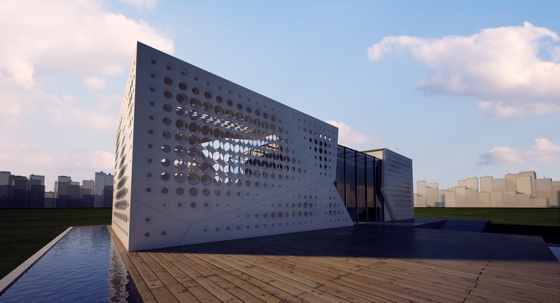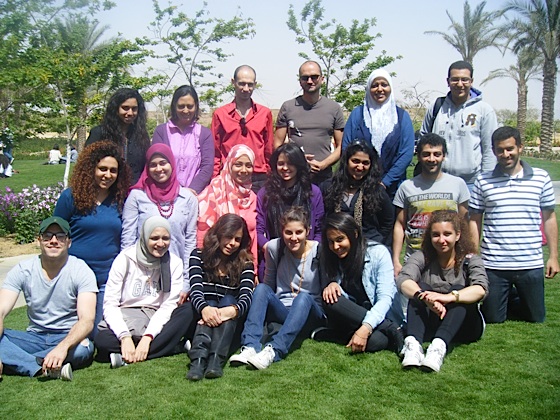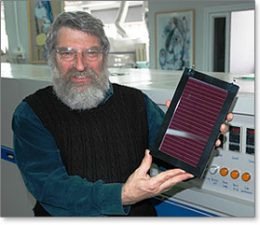 This beautiful solar-powered home could usher in Egypt’s period of healing, sustainably.
This beautiful solar-powered home could usher in Egypt’s period of healing, sustainably.
Last year when I visited Egypt, it felt heavy. For three decades, Mubarak’s forces succeeded to subdue the once innovative Egyptian people. But in his absence, a palpable sense of hopefulness has returned. While many challenges remain, including rising temperatures, pollution, and insufficient energy supplies, the barriers to fixing them do not.
Enter the American University of Cairo. Their Sustainable Living Interactive Design (SLIDES) project is the first in the Middle East selected to compete in one of the world’s largest inter-collegiate design competitions. Since the Solar Decathlon in Europe considers only the most advanced ideas, the energy efficient, solar-powered house concept produced by AUC students demonstrates that Egypt can heal itself.
Summertime cooling loads exact a terrible toll on Egypt’s energy supply. As a result, it was crucial to incorporate passive cooling and natural ventilation into the design. Adding to this, SLIDES borrows from ancient Egyptian building techniques, such as the Mashrabiya screens that deflect solar gain, and interlocking walls, which simplify construction, to reinforce their forward-looking project.
The screens also permit plenty of natural lighting, further obviating the need to use electricity. The team is also developing their own, home-grown sustainable building materials. One consists of recycled plastic and wood waste and is being tested to determine its structural viability, while papyrus, which has a long history in this region, is also being considered as a renewable choice for the moveable screen.
But this is no dinky building. Powered with energy derived from the sun, it will be what is called a “smart home” complete with technology that monitors energy use to ensure that it is being spent as efficiently as possible.
$1.1 million will pay for all of the materials and shipping expenses, as well as a one month stay in Madrid for the entire 19 member design team. That may seem expensive, but it’s a small price to pay to jump-start Egypt’s ability to research, develop, and hopefully grow the country’s sustainable architecture movement.
The team’s mentor, a hugely accomplished Mechanical Engineer, Dr. Lamyaa El-Gabry, notes that they hope to finish their R&D by next summer in order to ship the pieces to Madrid by September 2012. Asked if SLIDES will be completed locally, she said “Yes, made in Egypt with pride.”
More on Egyptian Architecture:
Hassan Fathy is the Middle East’s Father of Sustainable Architecture
Hassan Fathy Fan has High Hopes for Egypt’s Architecture
Mekano Designs Renewable Energy Skyscraper for Cairo’s Garbage City






amazing